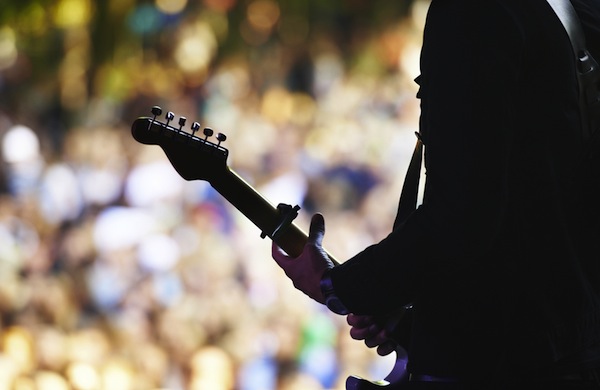
If you had to choose one word to describe San Diego’s music scene, it would probably be “diverse.” On any given weekend, audiences might have the choice of getting down with DJ beats, thrashing to experimental noise-rock, or sipping cocktails amid the sounds of live jazz. Likewise, the venues that San Diego concerts call home run the gamut from intimate acoustic lounges to sports-arenas-turned-concert-halls.
But have you ever wondered how these venues get the music all the way from the bands to your ears? Especially in larger arenas, this is no small feat—distractions such as echo and accidental distortion can make audiences demand refunds, which is why the audio technology that powers most concerts in San Diego is so important. Read on to learn more about amplification and how it helps local venues create a perfect sound.
Amplification: Turn Up the Music
When you pluck a guitar string, you produce a sound wave. Especially if that guitar is electric, that sound wave isn't very loud, which is to say that its amplitude is small. To make them larger, the amplifier must turn the sound wave into an electrical signal powerful enough to move the amp speaker's cones and produce a new, louder sound wave.
Small Venues: Just the Amps, Ma’am
Any live music fan is probably familiar with a stage’s basic setup: most will have a microphone connected to a speaker for the singer and amplifiers for each instrument. At a small venue, such as Soda Bar or Belly Up Tavern, this is usually all that’s required. What fans might not know is that the technology inside each amplifier varies depending on the instrument it’s amplifying.
Electric guitar amps come in analog and digital forms. Analog amps are preferred by many guitarists for their warmer sound and more harmonious distortion. The analog part means that the waveform created by the transistors is just a blown-up version of the incoming sound wave; in other words, it's analogous. This mirroring happens via the valves, glass tubes that are vacuum-sealed so electrons can flow unimpeded through space from a heated metal element toward a highly positively charged plate.
For keyboards, microphones, and other instruments that require accurate, distortion-free sound reproduction, a digital amp is better suited. The circuitry of digital amps—which tend to be lighter, cheaper, and more power efficient—translates the initial sound wave into a discrete series of on/off pulses, which are converted back into a sound wave after being amplified. At most volumes, a digital amp produces a clear, neutral sound.
Large Venues: Bigger and Louder
Even the best amplifier isn’t powerful enough to reach the back of a bigger venue such as Sleep Train Amphitheatre or House of Blues San Diego. That’s where PA systems come in. These systems start with microphones, which capture sound from the band’s amps and acoustic instruments and convert it into electrical signals. These signals head into a mixing board, where a sound engineer makes adjustments to improve the audio quality. The board sends these signals to a power amp, which boosts their volume before sending them to the venue’s speakers. Finally, these speakers emit the sound that the audience hears, whether they’re moshing near the stage or cheering from the back row.








